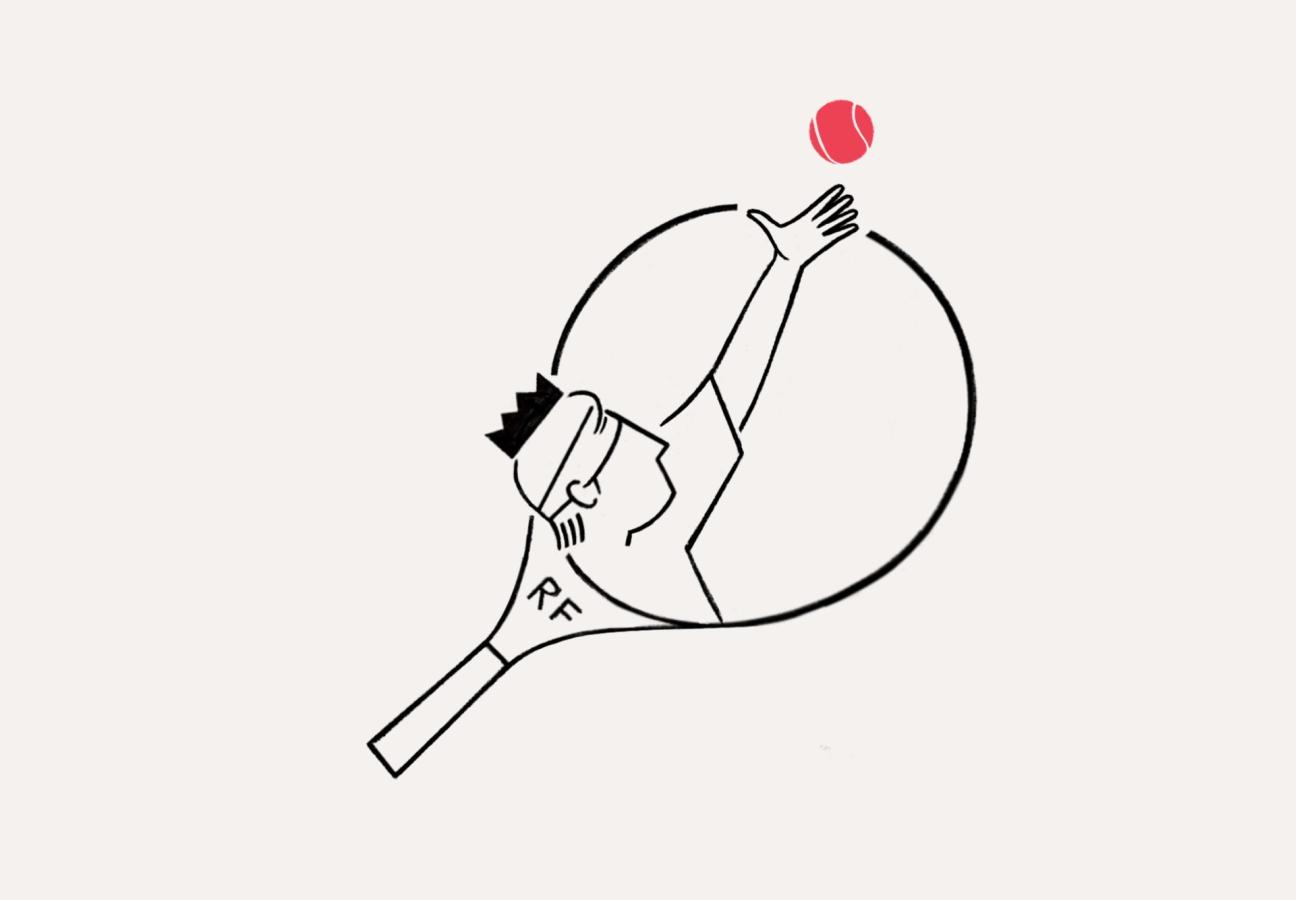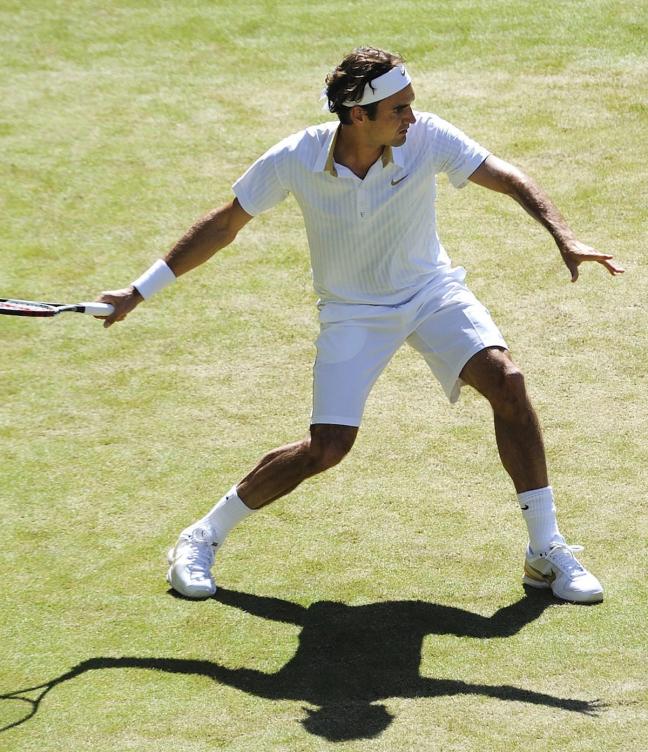The king is dead, long live the king: Roger Federer’s eternal final minutes
It was the briefest, most flickering and poignant of returns: Roger Federer’s final appearance as a professional tennis player. At a time when, in Britain at least, everyone was assumed to be in saturation mourning for the recently deceased Queen Elizabeth II, the announcement that Roger would retire after the Laver Cup* in London came as a quietly devastating surprise. We’d got used to not seeing him, had become accustomed to the dates of his return to the ATP circuit being constantly pushed back, but we always assumed that, at the very latest, he’d be at Wimbledon in 2023. That would be a fitting site for a return, even if it doubled as a first-round farewell. But no, it turned out not to be the Centre Court in July, but the O2 Arena in September that would mark his abdication.
The truth is that the Laver Cup has always been a bit of a novelty affair, an exhibition event dressed up as a tournament. It’s a big payday for players accustomed to enormous paydays, good fun for everyone involved, with some excellent tennis thrown in, but, really, who cares whether Europe or America beat that default alliance known as the Rest of the World? The fact that this was going to be Roger’s swan song lent it an allure that far surpassed that of the notional competition itself, even when — especially when — it became apparent that he wasn’t going to be able to play in the singles. This in turn contrived to bring about what ended up being the most memorable and, in many ways, perfect outcome: he’d partner Rafael Nadal in the doubles.

Rafa had been his longest-standing rival. They’d played against each other in some of the greatest tennis matches ever. They’d pushed each other to the limit of their abilities on so many occasions. It had been a rivalry to rival any in sport. But whereas the boxing matches between Muhammad Ali and Joe Frazier were the formal expression of a deeper antipathy — undying hatred, as far as Frazier was concerned — the ferocity of the competition between Roger and Rafa was matched by extraordinary graciousness.
They were superhuman, not just in how they played but in the way that they conducted themselves. Yes, yes, tennis is not boxing (as Joyce Carol Oates pointed out, you play football or tennis or whatever, you don’t play boxing) but the intensity of effort and concentration elevated what we were seeing to unprecedented levels.
“The one-handed backhand represents an ideal of beauty”
As was the case with other aspects of Roger’s career, this only became fully apparent in retrospect. Consider the distasteful third-round match at Wimbledon this year between Nick Kyrgios and Stefanos Tsitsipas and you get a sense of how high had been the standards set by Roger and Rafa, while playing for far bigger stakes. It’s a reminder that while we enjoy watching sporting excellence, what we love is sportsmanship (Sport without sportsmanship is not even sport.) As a boy besotted by cricket in Trinidad, C. L. R. James gave himself unquestioningly to ‘the code’ of behaviour embodied by cricket.
Later, he realised how this code was inseparable from a larger process of imperial rule and racial subjugation but, even as a mature radical, he kept faith with cricket as an ideal: a way of playing and a standard of behaviour and morality. For many of us Roger represented tennis as a comparable ideal, both in comportment and style. The double-handed backhand might be more efficient and reliable, but the one-handed backhand represents an ideal of beauty. The perfect tennis player must have a one-handed backhand.
And it wasn’t just the backhand, of course. Every shot Roger played, every move he made, was elegant, gorgeous and exciting. He was never boring, not for a moment. For a while we took this for granted, when he was winning everything in sight (out of sight, actually, since the US Open triumphs tended to be reported in the papers rather than watched live on TV). But I think we only began to fully appreciate the beauty of his game when we saw that it was also fragile. And the first to expose this fragility was, of course, Nadal, who relentlessly targeted Roger’s susceptibility to top-spin balls hit high to his backhand.
Over time, it became apparent, the backhand could become a liability. This seemed to have become a permanently damaging fact until, coming back from a first bout of knee surgery, Roger found an answer in 2017 — not just beating Rafa in the final of the Australian Open (and again, a few months later, at Indian Wells) but achieving the impossible: hitting backhand winners to Rafa’s implacable forehand. It was a glorious apotheosis.

“Djokovic’s rivalry with Federer in particular was prolific”

Photography by @slgckgc (Flickr)
But it wasn’t the end. Novak Djokovic had several times demonstrated his ability to wear Federer down, and for many of us, Roger’s Wimbledon career seemed symbolically to have ended not against Hubert Hurkacz (a tepid three-set defeat, after which he resigned himself to further surgery) in 2021, but with his failure to convert two championship points against Djokovic the previous year. If only those two points had gone differently! Well, they didn’t, the Tour rolled on and — to cut this part of the story short — all eyes were on Roger at the O2 Arena.
He walked on to this most un-Wimbledon-like of venues — more nightclub than tennis court — and even that was amazing: the rhythm, poise and ease. We had reached a pitch of adoration and appreciation where everything he did — a wave to the crowd — seemed touched with glory. He played alongside Rafa. The match unfolded. They lost — which at least proved it wasn’t fixed, wasn’t merely ceremonial. It didn’t matter. Nothing mattered except seeing Roger for the last time.
Now, it was always going to be emotional for him and it was great that he was there with a big cohort of fellow and former players, because Roger loved being on the Tour. He got on well with everyone, was unfailingly and famously nice — to everyone. But we have to acknowledge the good opinion of his fellow professionals in another, more important way. I have a sense of how great Roger was. So do you. So does everyone. But the people who really know — who appreciate everything he did — are his fellow players. And no one saw this more clearly than Rafa.
“He walked on to this most un-Wimbledon-like of venues — more nightclub than tennis court”
So yes, more than the tennis, it was the sight not just of Roger but Rafa in tears that became iconic. That was extraordinarily moving, but there was more to come. The image — the shot that went round the world — of Roger gripping Rafa’s hand showed how much these two had meant to each other, how they cherished each other. The nice thing about the still image is that it allows us to edit out the fact that the gesture seemed to have been elicited by a cheesy song performed by some superstar whose name means nothing to me. That photograph will live forever, but it’s actually another image from this time that I recall most vividly.
All of this, as I said at the beginning, occurred in the aftermath of the death of Queen Elizabeth. With commendable speed the French sports magazine L’Equipe published an issue with a picture of Roger on the cover with the strap line, in English: ‘God Save the King!’
*Known as the ‘Ryder Cup’ of tennis, the Laver Cup is played on sleek, all-black courts and is named after the legendary Rod Laver, who won the caldendar-year Grand Slam twice in his career.
Geoff Dyer’s book ‘The Last Days of Roger Federer’ is published by Canongate.
Want more sports content? Read our interview with Erling Haaland, in which the striker talks pre-game pressure…
Become a Gentleman’s Journal member. Find out more here.

Become a Gentleman’s Journal Member?
Like the Gentleman’s Journal? Why not join the Clubhouse, a special kind of private club where members receive offers and experiences from hand-picked, premium brands. You will also receive invites to exclusive events, the quarterly print magazine delivered directly to your door and your own membership card.